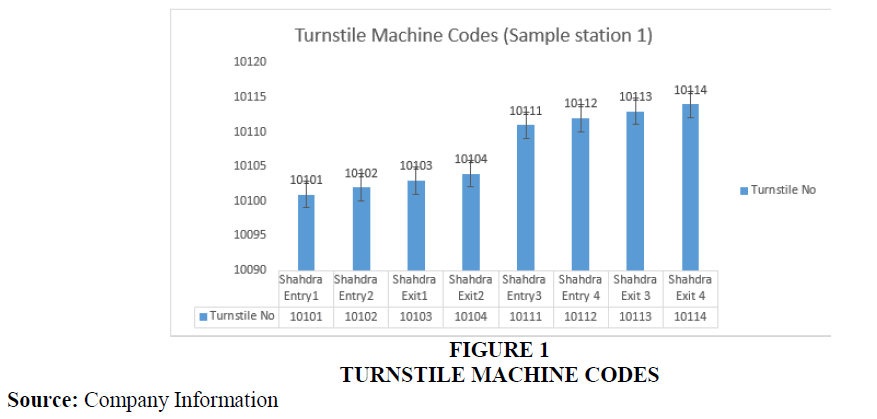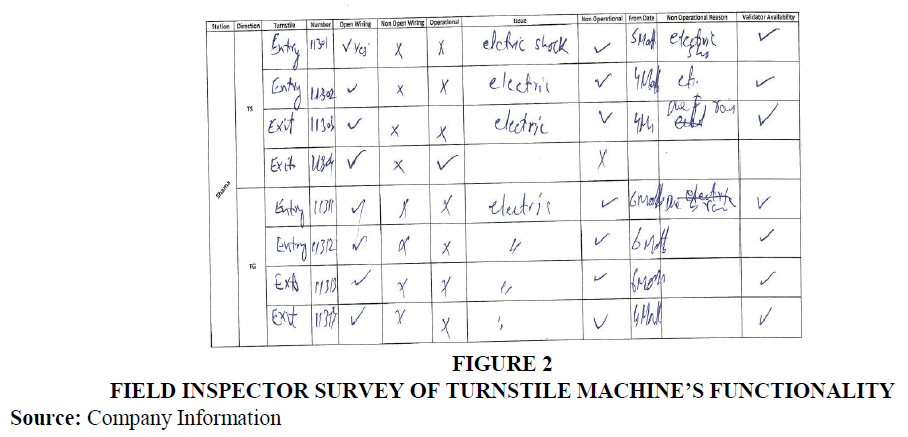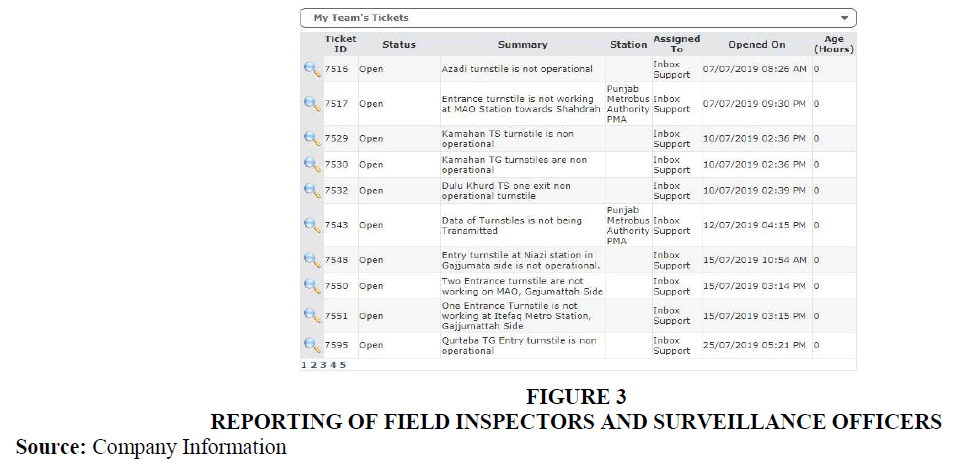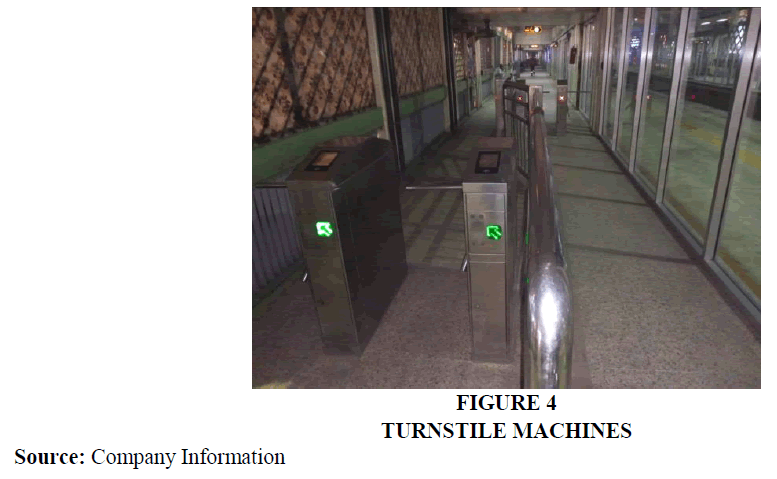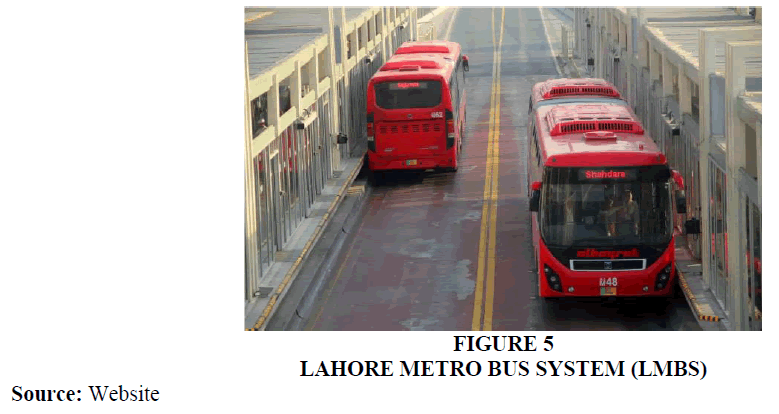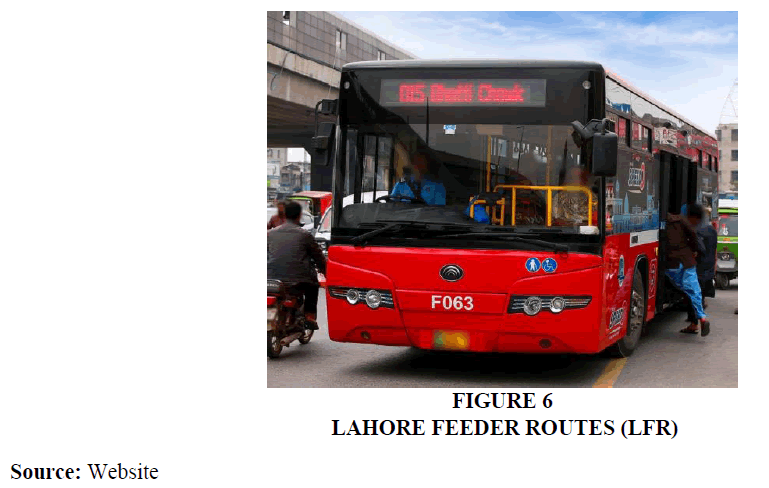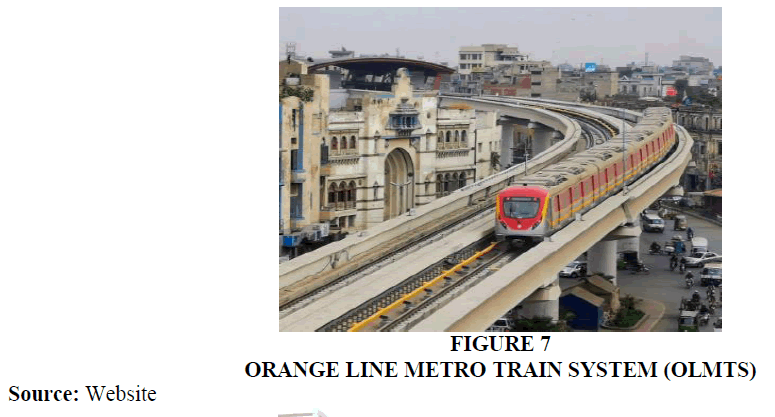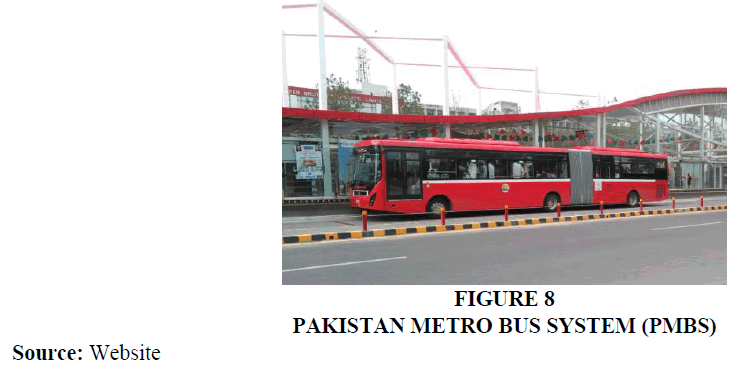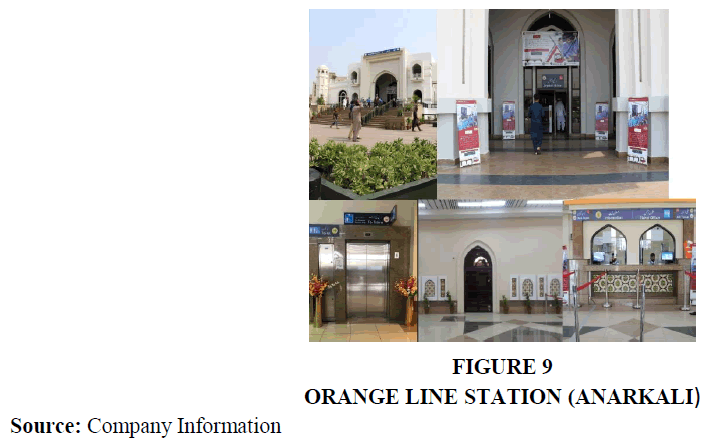Case Reports: 2024 Vol: 30 Issue: 2
Overcoming Operational Challenges: A Case Study on Turnstile Management in Lahore Metro Bus Route (PMA)
Hafiz Muhammad Ali Shafique, Superior University, Lahore
Muhammad Rafiq, Superior University, Lahore
Citation Information: Shafique, H.M.A. & Rafiq. M (2024). Overcoming operational challenges: a case study on turnstile management in Lahore metro bus route (PMA). Journal of the International Academy for Case Studies, 30(2), 1-8.
Introduction
Mid-2017 was the time when Mr. Iqrar joined as an Assistant Manager of operations at the Punjab Mass Transit Authority (PMA), the biggest mass transit authority of Pakistan with headquarters in Lahore, Pakistan. The position attracted Iqrar because of the opportunity to help the authority in running smooth transit operations for the general public as the authority is a public sector organization. He was also attracted to the position because of his educational background of transportation engineering being a M.Phil. degree holder in the same field. He was hoping that he would somehow contribute in making people’s lives easy and enhance his skills as well.
Initially, he joined the department of Lahore metro bus of the Punjab mass transit authority. He got three designations as his team. The designations under his supervision are the operation supervisors, surveillance officers, and field inspectors. The 30 percent of the resource in his team was newly hired from a recent campaign.
From the first week, Iqrar started to realize that the operations in the organization are being run as the other public sector organizations run in the country. The total attitude of employees was just to manage the operations not to make them smooth or hassle-free for the public and staff. Iqrar also noticed that it is not only with the headquarters staff but also with the staff on field or stations. So, he also visited the stations to assess the condition of operations.
By the end of the week, he realized that a few big challenges were ahead. The behavioral and mindset change of the team from just managing to enhancing the operations was the biggest challenge. This challenge was followed up with another challenge which was making the right decisions at the right time which the management was lacking a lot.
He knew that he is not a professional in psychology kind of thing but he was very clear about one thing in his mind that he will need to be an example by himself. The organization mostly runs its operations through outsourcing. So, the vendors were also in the back of his mind. He will need to utilize some attention to detail-skills regarding the deals with the vendors and all the decisions cannot be left to the vendors.
Punjab Mass Transit Authority
Public transport systems play a crucial role in urban mobility, and efficient management of infrastructure is paramount for their smooth operation. Punjab Mass transit Authority (PMA) is an autonomous body established by Government of the Punjab with the purpose of planning, construction, operation and maintenance of mass transit systems in the major cities of the province; for providing safe, efficient and comfortable urban transportation system. PMA’s vision is to provide state-of-the-art mass transit system for all (Annexure 1, Figure 1).
The mission of PMA is to establish and operate mass transit system ensuring safety, comfort and efficacy. The features of mass transit system are planned to cater to the vision and mission of the Authority. The PMA has outsourced all of its operation and maintenance services to tap the private sector’s expertise. The PMA mainly focuses on planning, contracting of services and oversight of contracts / operations (Annexure 2, Figure 2).
This case study delves into the challenges faced by the Punjab Mass Transit Authority (PMA) in the operation and maintenance of 240 turnstiles along the Lahore Metro Bus Route. The turnstiles, integral to passenger flow control, were entrusted to a third-party service provider, Inbox, whose operational practices led to a cascade of issues impacting both functionality and financial transparency.
Services Offering
PMA are offering following services to facilitate public.
Lahore Metro Bus System
The Lahore Metro Bus System (LMBS) from Shahdara to Gajjumata, established in Lahore, is the first system operated by PMA. It covers 27 km distance and comprising of 27 stations (18 at-grade and 9 elevated) (Annexure 3, Figure 3).
Lahore Feeder Routes
In order to increase the coverage area of LMBS and OLMRTS, the PMA has planned to operate integrated public transport routes with Metrobus Line and Orange Line. The Integrated Public Transport Network / Route has broadly three components i.e., physical, operational and fare integration (Annexure 4, Figure 4).
Orange Line Metro Train System
The Orange Line Metro Train System is the state-of-the-art project established by Government of Punjab. The Orange Line starts from Ali Town on Raiwind Road and terminates at Dera Gujran. It connects with LMBS at Anarkali Station. It covers 27.1 km distance and comprising of 26 stations (Elevated Stations: 24 & Cut & Cover Stations: 02).
Pakistan Metro Bus System
The Pakistan Metro Bus System operates between Islamabad and Rawalpindi. The Pakistan Metro Bus System starts from Saddar and terminates at Pak Secretariat. It covers 24 km distance and comprising of 24 stations (14 at-grade and 10 elevated stations).
Multan Metro Bus System
In order to overcome growing congestion problems, Government of the Punjab has decided to revamp the public transport sector in Multan. The Multan Metrobus System starts from Bahuddin Zakariya University (BZU) and terminate at Qaddafi Chowk. It covers 18.5 km distance and comprising of 21 stations (7 at-grade and 14 elevated stations).
Multan Feeder Routes
In order to increase the coverage area of MMBS, the PMA has planned to operate integrated public transport routes with Metrobus Line. The Integrated Public Transport Network / Route has broadly three components i.e., physical, operational and fare integration ((Annexure 5, Figure 5).
Upcoming Services
Blue Line (Township / Gulberg Boulevard / Jail Road)
Purple Line (Bhatti Gate / Allama Iqbal Road / Airport)
PMA Three Pillar of Success
Safe
PMA provide safe transport system for passengers through security measures i.e., Security staff available at any PMA premises, efficient surveillance system through CCTV cameras and runs vehicles though professional and experienced driving staff (Annexure 6, Figure 6).
Comfortable
PMA provide friendly environment on all operational routes with VRV system, easy access to reached platform through escalator for handicapped and senior citizen and passengers reached their destination in short time than local transport.
Economical
PMA providing a safe, comfortable and efficient transport services for public with the minimum fare. This transport system provides a lot of financial gain to poor people on daily basis. PMA also offers free transport service to students up to 12th standard on LMBS and OLMRTS. In Current situation of inflation, this transport system plays a vital role to get sustainable relief for poor people of Pakistan.
Overcoming Operational Challenges
Contract Dispute and Operational Challenges
It is not very unknown thing for the regular passengers of Punjab Masstransit that the operations and maintenance of Punjab Masstransit authority is outsourced. Operations were very smooth and people were enjoying this public transport till 2018. PMA owns and oversees the operation of 240 turnstiles across twenty-seven metro stations along the Lahore Metro Bus Route. Inbox, was responsible for the day-to-day operation and maintenance, requested a contract revision to accommodate increased payments. The authority arranged a meeting with the vendor and asked for a briefing from the vendor as per the procedure. However, the vendor could not satisfy the board with their briefing and the board decided to not move forward with the vendor’s application to increase the price. When PMA declined the request, a sudden shift in Inbox's behavior was observed, leading to the intentional damage of turnstiles at various stations. Claims of turnstile malfunctions, allegedly due to short circuits during rain, became commonplace (Annexure 7, Figure 7).
The lack of oversight from PMA officials, attributed to staff shortages, allowed Inbox to disable 50 plus turnstiles, citing them as out of order or damaged. With a significant portion of turnstiles non-functional, PMA faced challenges in gathering data on passenger entries and exits, creating an environment ripe for corruption in the sale of travel tokens.
Mr. Iqrar, the assistant manager of PMA (Punjab Masstransit Authority) started noticing that all these machines that have been working fine for the past many years have started malfunctioning suddenly which is causing many hurdles in the smooth operations of transport for passengers. But taking notice was not enough as it was causing financial and reputational losses to the authority and people were losing their time as they had to wait in long queues because of turnstile machines being out of order(Annexure 8, Figure 8).
These intentional faults and malfunctions started getting much worse so now Mr. Iqrar had to go for a proper solution to this problem and make a plan for further action. Mr. Iqrar brought up that matter to other board members and asked for a proper go-ahead for this assignment.
Find The Cause with Evidence
For the solution to any problem, you have to first know about the root cause of the problem which he knew already but, in an organization, words matter less, and data matters more. So, to collect data he started taking a few steps which are:
a) He used the CCTV cameras that are installed at entry and exit to know about the most rushed stations at different times so that he can confirm if the machines that are malfunctioning are from those stations or not.
b) He asked the report about all turnstile machines from its operation supervisors and surveillance officers.
c) He sent multiple field inspectors to do the surveys of stations whose turnstile machines were malfunctioning.
d) He verified the data through the software (KentKart) to further confirm about the faulty turnstile machines.
e) Then he compared their fault cycles in which the fault appears again.
After merging all the data. He went to the conclusion that these machines had been working fine for many years with the maintenance of the same vendor but suddenly 50 to 60 machines from 240 started going faulty. This data favored the argument that somehow any kind of intention is behind the bad maintenance of the turnstile machines (Annexure 9, Figure 9).
Initiating Corrective Measures
For any kind of internal matter, the passengers and the reputation of the organization should not suffer. So, MR Iqrar took some urgent decisions to carry on the flow of smooth operations. which are mentioned below:
a) He used his collected data to know about the stations where both turnstile machines were out of order and passengers were suffering because of that.
b) Then he used the same data to know about the light burden stations where both turnstiles were working.
Initially, He instructed Inbox to keep at least one turnstile operational at each entry and exit point. Additionally, the possibility of replacing malfunctioning turnstile parts with those from stations where both machines were operational was suggested.
Realizing the severity of the situation, PMA officials began numbering and coding each turnstile. Information on out-of-order turnstiles, including their numbers, reasons for malfunction, and the date of malfunction, was collected from security staff at each Metro Bus station. This data underwent cross-verification through software (KentKart) field inspectors, operation supervisors, and surveillance reports to ensure accuracy.
Data Verification and Contract Revision
Once the data was compiled and verified, PMA revised the payment structure for Inbox. Previously, Inbox was receiving payments for the operation and maintenance of all 240 turnstiles, regardless of their operational status. The extra payments Inbox received during previous months were adjusted based on the revised data, and payments were recalibrated to reflect the actual number of working turnstiles.
This meticulous data verification process uncovered the discrepancies in the payment structure, prompting PMA to rectify the financial aspect of the contract. The reduction in payments acted as a catalyst for Inbox to reassess its approach to turnstile maintenance.
Operational Improvements
Faced with the prospect of reduced payments, Inbox refrained from making further claims of short circuits during rainy weather. Instead, they shifted their focus to proactive turnstile maintenance, taking responsibility for replacing malfunctioning parts and repairing electric cables without expecting additional payments.
This shift in attitude not only improved the functionality of the turnstiles but also fostered a collaborative relationship between PMA and Inbox. The experience served as a learning curve for both parties, highlighting the importance of vigilant oversight and efficient communication in the management of critical urban infrastructure.
Due to improvement in functionality of turnstiles, PMA operations became smooth and people didn’t have to wait in long ques for their entrance and exit. It fulfilled PMA claim that everyone should reach their destination on time and in safe environment. It also reduced the risk of theft cases in public which can happen in rushed areas. Corruption chances from passenger and service provider due to manual handling vanished as turnstiles machines was fully operational and risk of financial loses to PMA also resolved.
Importance of Data Verification
In response to the operational challenges caused by the damaged turnstiles, PMA took proactive measures to address the situation. They began numbering and coding the turnstiles and obtained data from security staff, KentKart records, and surveillance reports to verify the status of the turnstiles, including the reasons for being out of order and the dates of malfunction. This meticulous data verification process allowed PMA to accurately assess the operational status of the turnstiles and identify the extent of the damage caused by Inbox's actions.
Key Takeaways
The case study underscores several key takeaways:
a) The critical role of data in resolving contract disputes and assessing operational status.
b) The importance of proactive contract management in addressing operational challenges.
c) The impact of contract disputes on operational efficiency and potential financial implications.
d) The significance of fair and transparent payment mechanisms in maintaining contractual relationships.
Conclusion
In conclusion, the case study of PMA and Inbox's contract dispute and subsequent resolution serves as a valuable example of the challenges and complexities involved in contract management and operational maintenance. By leveraging data verification and proactive contract management, PMA was able to address the disruptive actions of Inbox and restore operational efficiency to the metro stations. This case study provides valuable insights for organizations involved in contract management and operational maintenance, emphasizing the importance of data, proactive measures, and fair contractual relationships in ensuring smooth operations and resolving disputes effectively.
What Should Mr. Iqrar Do?
How would he need to transform the mentality of the internal team and the outsourced team? What facts and arguments would help him negotiate with the management to question the decisions of the vendor? How would he motivate the team by calculating and monitoring the success from day one?
Annexure 1
Annexure 2
Annexure 3
Annexure 4
Annexure 5
Annexure 6
Annexure 7
Annexure 8
Annexure 9
Received: 02-Feb-2024, Manuscript No. JIACS-24-14456; Editor assigned: 05-Feb-2024, Pre QC No. JIACS-24-14456 (PQ); Reviewed: 21-Feb-2024, QC No. JIACS-24-14456; Revised: 29-Feb-2024, Manuscript No. JIACS-24-14456 (R); Published: 01-May-2024
